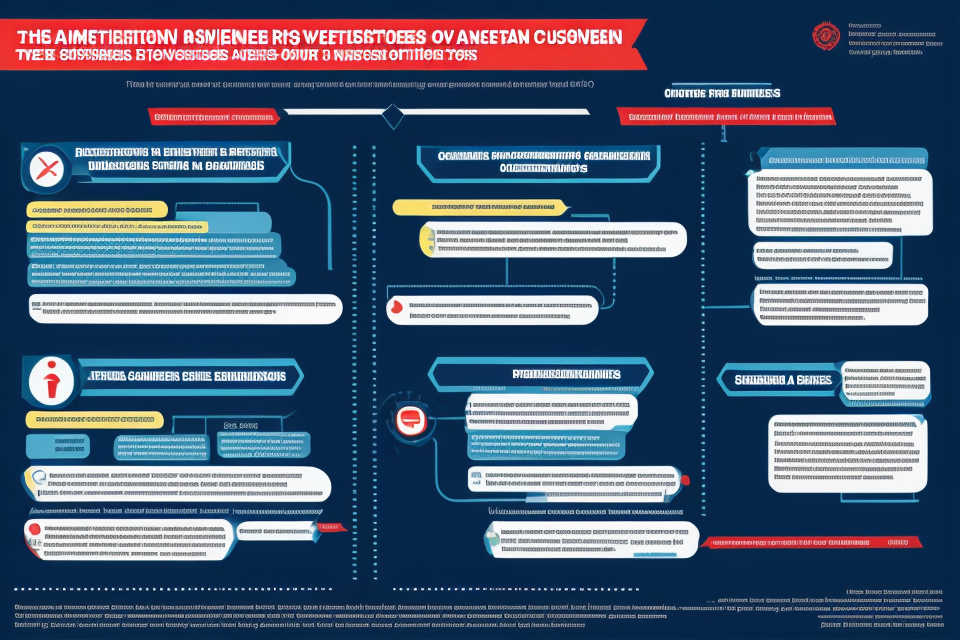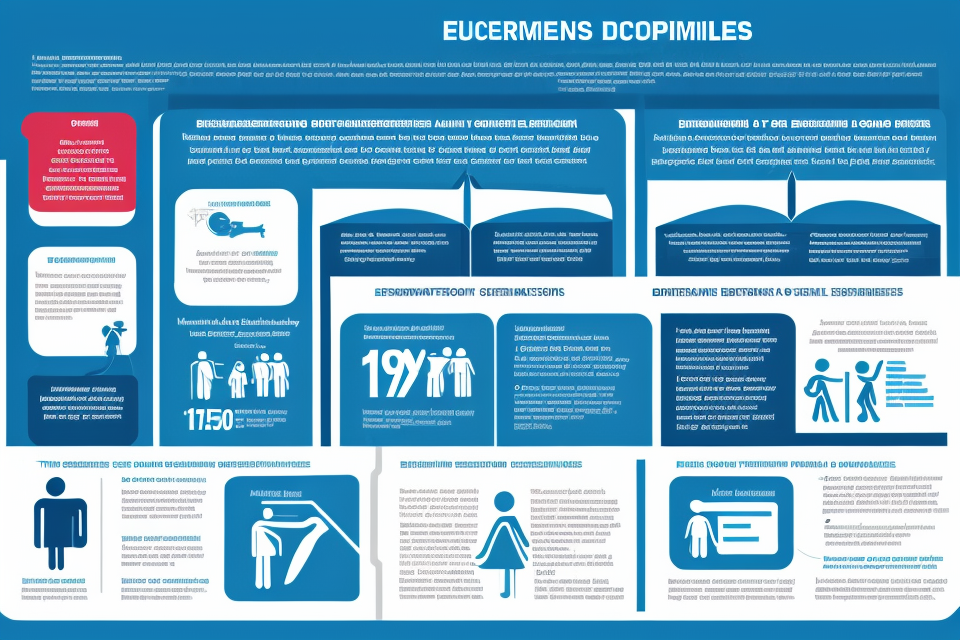
Are you a student, a researcher, or an educator who wants to know the difference between RCW and WAC? Then you are in the right place! This guide will help you understand the differences between the two, and how they relate to department regulations. RCW stands for Revised Code of Washington, which is the official codification of Washington state laws. On the other hand, WAC stands for Washington Administrative Code, which is the set of rules and regulations that state agencies use to implement, enforce, and interpret laws. Both RCW and WAC are important sources of law in Washington state, but they serve different purposes and have different structures. Let’s dive in and explore the differences between RCW and WAC!
What is RCW?
Overview of the Revised Code of Washington
The Revised Code of Washington (RCW) is a comprehensive codification of the general and permanent laws of the state of Washington. It is also known as the state’s constitutional law and is considered the primary source of legal authority for state agencies, local governments, and citizens. The RCW is organized into titles, chapters, and sections, and each section is assigned a unique section number for easy reference.
The purpose of the RCW is to provide a clear and concise statement of the laws of the state, to serve as a reference for state agencies and local governments, and to ensure that the laws of the state are accessible to all citizens. The RCW is updated regularly to reflect changes in the law and to ensure that it remains an accurate and up-to-date source of legal authority.
The scope and application of the RCW is broad and far-reaching. It applies to all state agencies, local governments, and citizens, and it covers a wide range of topics, including education, health care, environmental protection, and transportation, among others. The RCW is also used as a basis for state regulations and is often cited in court cases as legal authority.
What is WAC?
Overview of the Washington Administrative Code
The Washington Administrative Code (WAC) is a collection of rules and regulations that state agencies use to implement, enforce, and administer laws passed by the Washington State Legislature. The purpose of WAC is to provide a consistent and comprehensive set of rules that state agencies must follow when carrying out their duties and responsibilities.
WAC covers a wide range of topics, including but not limited to, environmental protection, health and safety, education, transportation, and economic development. Each agency is responsible for creating and maintaining its own set of WAC rules, which must be consistent with the laws passed by the legislature.
WAC rules are organized into titles, chapters, and sections, and are numbered consecutively throughout the code. Each WAC rule has a specific scope and application, which outlines the circumstances under which the rule applies. For example, a WAC rule may apply to all state agencies, or only to a specific agency or industry.
In summary, the Washington Administrative Code is a set of rules and regulations that state agencies use to implement, enforce, and administer laws passed by the Washington State Legislature. Each agency is responsible for creating and maintaining its own set of WAC rules, which must be consistent with the laws passed by the legislature.
Differences Between RCW and WAC
Comparing the Structure and Content of RCW and WAC
While RCW and WAC both serve as the primary sources of law in Washington state, there are significant differences in their structure and content. Understanding these differences is crucial for anyone seeking to navigate the complex web of regulations that govern the state’s departments and agencies.
Overview of Similarities and Differences
RCW and WAC are both created by the state’s legislative and executive branches, respectively. They are intended to provide guidance and direction to state agencies and to ensure that their actions are consistent with the state’s laws and policies. However, there are some key differences between the two that distinguish them from one another.
RCW, or the Revised Code of Washington, is the state’s official codification of its statutory law. It is a collection of laws that have been enacted by the state’s legislature and signed into law by the governor. RCW is organized into chapters, titles, and sections, and it provides a comprehensive overview of the state’s legal framework.
WAC, or the Washington Administrative Code, is the state’s official collection of rules and regulations promulgated by state agencies. It is organized into chapters, sections, and pages, and it provides detailed guidance on how state agencies should carry out their duties and responsibilities.
Examples of How They Differ
One key difference between RCW and WAC is the level of detail they provide. While RCW provides a broad overview of the state’s legal framework, WAC provides more specific guidance on how state agencies should implement that framework. For example, while RCW may provide the authority for a state agency to regulate a particular industry, WAC would provide the detailed rules and regulations that the agency would use to carry out that authority.
Another difference between RCW and WAC is the process by which they are created and updated. RCW is created by the state’s legislature and signed into law by the governor. WAC, on the other hand, is created by state agencies through a process known as rulemaking. This process allows state agencies to create rules and regulations that are necessary to carry out their duties and responsibilities, but it also requires them to follow certain procedures, such as providing notice and an opportunity for public comment.
Overall, understanding the differences between RCW and WAC is essential for anyone seeking to navigate the complex web of regulations that govern the state’s departments and agencies. While both provide important guidance and direction, they differ in their level of detail, the process by which they are created and updated, and their overall structure and content.
RCW vs. WAC: Key Differences
- Legal Authority and Effect
- RCW (Revised Code of Washington) is the codified law of the state of Washington, enacted by the legislature and signed into law by the governor. RCWs have the force of law and are binding on all state agencies and citizens.
- WAC (Washington Administrative Code) is the set of rules and regulations adopted by state agencies to implement, interpret, or make specific the policy declared by the legislature in enacting RCWs. WACs have the force of law and are binding on state agencies and citizens.
- Scope and Coverage
- RCWs apply to all citizens and entities within the state of Washington, regardless of whether they are state agencies or private entities.
- WACs apply only to state agencies and their actions, and not to private entities or individuals.
- Amendment and Repeal Process
- RCWs can only be amended or repealed by the legislature through the passage of new laws.
- WACs can be amended or repealed by state agencies through the formal rule-making process, which includes public notice, comment, and adoption by the agency.
Applying RCW and WAC in Practice
How to Access and Use RCW and WAC
In order to effectively apply RCW and WAC, it is important to know how to access and use them properly. There are various online resources and tools available that can help with this process.
Online Resources and Tools
One useful tool for accessing RCW and WAC is the Washington State Legislature’s website. This website provides a searchable database of both current and historical RCW and WAC. Users can search by keyword, bill number, or section number. Additionally, the website offers a side-by-side comparison of RCW and WAC, which can be helpful in understanding the differences between the two.
Another helpful resource is the Washington State Office of the Code Revisor’s website. This website provides access to the current and historical versions of RCW and WAC, as well as information on how to interpret and apply them. The website also offers a user-friendly search function and allows users to sign up for email alerts when changes are made to the codes.
Staying Up-to-Date
Given the constant changes to RCW and WAC, it is important to stay up-to-date with any updates or amendments. Failure to do so can result in non-compliance with regulations and potential legal consequences. To ensure that you are aware of any changes, it is recommended to regularly check the Washington State Legislature’s website and sign up for email alerts from the Washington State Office of the Code Revisor.
In addition to staying up-to-date with changes to RCW and WAC, it is also important to stay informed about any relevant case law or court decisions that may impact their interpretation and application. This can be done by regularly checking legal databases and subscribing to relevant legal publications.
By utilizing these online resources and tools, and staying up-to-date with changes to RCW and WAC, you can ensure that you are applying them correctly and in compliance with relevant regulations.
Compliance and Enforcement
In order to ensure that state agencies and departments are adhering to the regulations set forth in RCW and WAC, there are specific responsibilities and penalties for non-compliance.
Responsibilities of State Agencies and Departments
State agencies and departments are responsible for ensuring that they are in compliance with the regulations set forth in RCW and WAC. This includes regularly reviewing and updating their policies and procedures to ensure that they are in line with the most recent regulations. In addition, state agencies and departments are responsible for providing training and education to their employees on the regulations set forth in RCW and WAC.
Penalties for Non-Compliance
Non-compliance with RCW and WAC can result in penalties for state agencies and departments. These penalties can include fines, suspension or revocation of licenses, and even legal action. In addition, non-compliance can also result in a loss of public trust and damage to the reputation of the state agency or department.
It is important for state agencies and departments to take compliance with RCW and WAC seriously in order to avoid these penalties and ensure that they are able to effectively serve the public. This includes staying up-to-date on the latest regulations and taking proactive steps to ensure compliance.
RCW vs. WAC: Which Applies?
Criteria for determining applicability
When determining whether RCW or WAC applies in a particular situation, it is important to consider the following criteria:
- Scope: The scope of the regulation must be considered. If the regulation is more broadly applicable, it may be found in the RCW. If it is more narrowly applicable, it may be found in the WAC.
- Nature of the regulation: The nature of the regulation must also be considered. Regulations that are more administrative in nature may be found in the WAC, while those that are more legislative in nature may be found in the RCW.
- Date of enactment: The date of enactment of the regulation must also be considered. More recent regulations may be found in the WAC, while older regulations may be found in the RCW.
Examples of when RCW or WAC may be more relevant
There are several examples of when RCW or WAC may be more relevant in different situations:
- Adoption of WAC: WAC is more relevant when it comes to the adoption of new regulations by state agencies. This is because WAC is the primary source of rulemaking authority for state agencies.
- Amendment of WAC: RCW is more relevant when it comes to the amendment of WAC. This is because RCW contains the statutory authority for state agencies to adopt and amend regulations.
- Legislative changes: RCW is more relevant when there are legislative changes to the law. This is because RCW contains the statutory authority for state agencies to adopt regulations.
- Challenges to WAC: RCW is more relevant when there are challenges to the validity of WAC. This is because RCW contains the statutory authority for state agencies to adopt regulations, and the validity of WAC may be challenged based on the authority granted in RCW.
Key Takeaways and Final Thoughts
- Recap of the main points
In this guide, we have discussed the differences between RCW and WAC, two sets of regulations that govern department operations in Washington State. While RCW is the state’s official set of laws, WAC is the set of rules and regulations that departments create to carry out the provisions of RCW. It is important for department staff to understand these differences to ensure compliance with state regulations.
- Importance of understanding RCW and WAC for department regulations
Understanding the differences between RCW and WAC is crucial for department staff to effectively carry out their duties and responsibilities. Failure to comply with state regulations can result in legal consequences, financial penalties, and damage to the department’s reputation. By understanding the differences between RCW and WAC, department staff can ensure that they are in compliance with state regulations and avoid potential legal issues.
Additionally, understanding the differences between RCW and WAC can help department staff create effective policies and procedures that meet state regulations while also being practical and effective for the department’s operations. This understanding can also help ensure that the department’s operations are transparent and accountable to the public, which is important for maintaining trust and credibility with stakeholders.
In summary, understanding the differences between RCW and WAC is essential for department staff to effectively carry out their duties and responsibilities, avoid legal issues, and ensure transparency and accountability. By following the guidelines and best practices outlined in this guide, department staff can ensure compliance with state regulations and create effective policies and procedures that meet the needs of the department and its stakeholders.
FAQs
1. What is RCW?
RCW stands for Revised Code of Washington. It is a compilation of all the general laws of the state of Washington, including laws passed by the state legislature and signed by the governor. It is also known as the state’s codified law.
2. What is WAC?
WAC stands for Washington Administrative Code. It is a collection of rules and regulations adopted by state agencies to implement, interpret, or make specific the policy declared by the legislature in enacting RCWs.
3. What is the difference between RCW and WAC?
RCWs are the state’s general laws, while WACs are the rules and regulations that state agencies use to implement those laws. RCWs set the policy for the state, while WACs provide the details on how to carry out that policy.
4. Are RCWs and WACs equally important?
No, RCWs are considered to be more important than WACs because they are the state’s general laws. WACs are created to provide more specific guidance on how to implement the policies set forth in RCWs.
5. Can WACs override RCWs?
No, RCWs are considered to be the supreme law of the state and cannot be overridden by WACs. WACs can only provide additional guidance and interpretation of the policies set forth in RCWs.
6. How are RCWs and WACs created?
RCWs are created by the state legislature, while WACs are created by state agencies. The state legislature has the authority to enact laws, while state agencies have the authority to create rules and regulations to implement those laws.
7. How can I access RCWs and WACs?
RCWs and WACs are both available online through the Washington State Legislature’s website and the Washington State Register’s website, respectively. You can also access them through the state law library or through online legal research databases.
8. How often are RCWs and WACs updated?
RCWs are updated annually by the state legislature, while WACs are updated regularly by state agencies as needed to reflect changes in policy or law. It is important to regularly check for updates to both RCWs and WACs to ensure that you are following the most current regulations.


